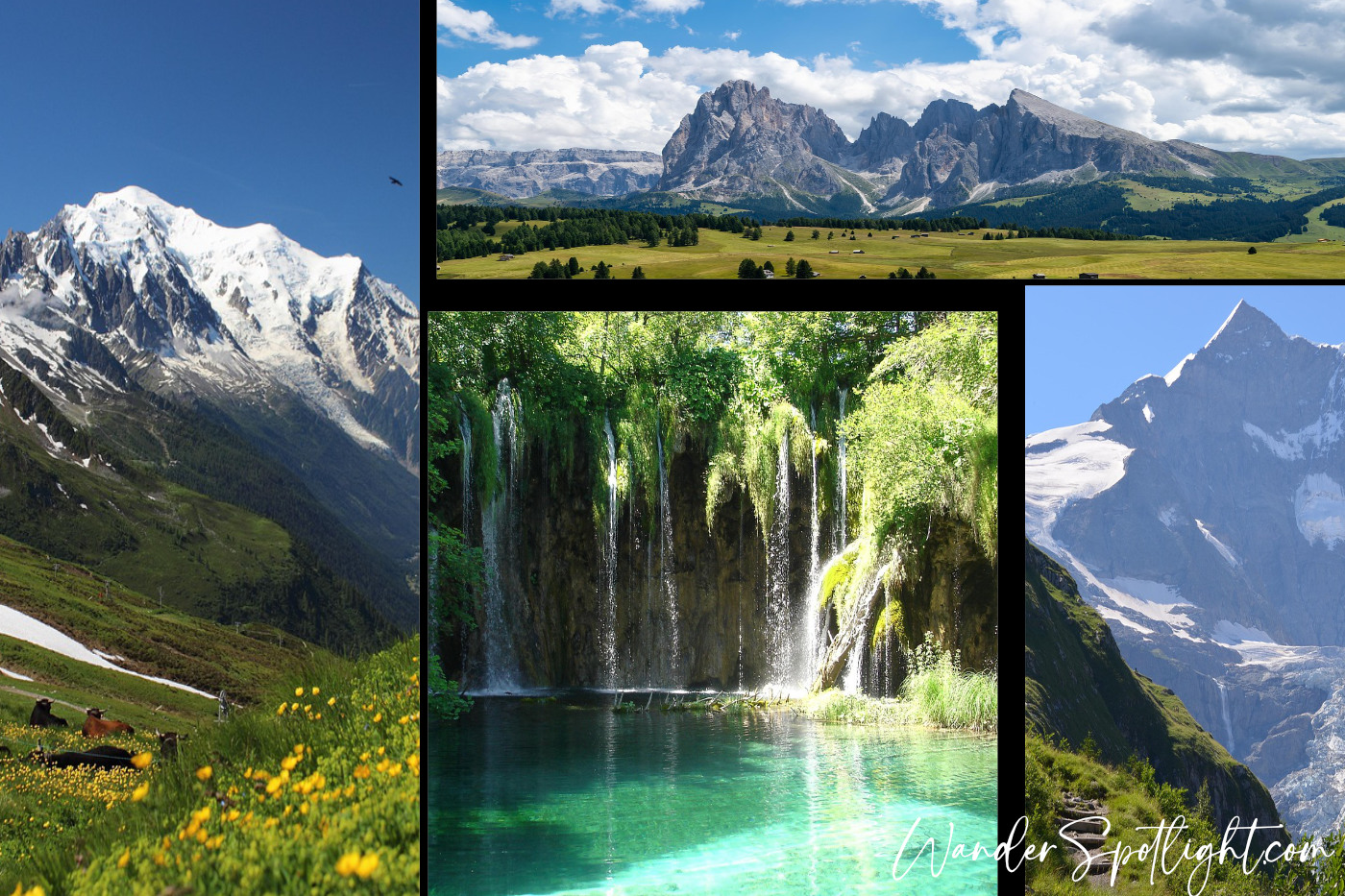Europe has long been revered for its tapestry of ancient routes, sweeping panoramas, and the promise of legendary excursions—a paradise for anyone seeking the best treks in Europe. Hiking in Europe resonates with a sense of history, as you follow centuries-old pathways used by traders, pilgrims, and dreamers alike. In the quest for the best places to hike in Europe, wanderers uncover citadel towns perched high on cliffs and emerald meadows dotted with wildflowers. Each step on these best hiking trails in Europe offers an immersion into timeless charm.
Beyond the spectacular scenery, the best treks in Europe echo with whispered stories from bygone eras—castles, monasteries, and remote villages that have witnessed countless travelers passing through. Venturing on these best hiking trails in Europe leads to deeper connections with the land, its people, and its heritage. Savor the sound of rushing rivers, breathe in the fresh alpine air, and let your spirit roam free. Prepare to uncover the best places to hike in Europe, as our journey begins to unfold in unforgettable landscapes.
Table of Contents
The Swiss Alps: Snow-Kissed Splendor
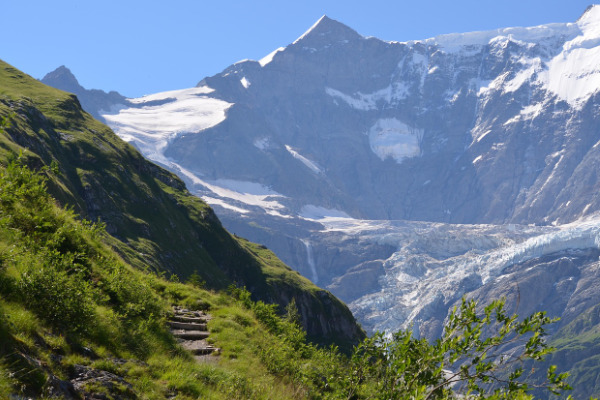
Switzerland, I remember the first time I gazed upon the Swiss Alps—my breath caught in my throat, and an electric flutter of anticipation ran through me. These soaring peaks stand like guardians of Europe’s heart, promising some of the best hiking trails in Europe for those who dare to venture. The crisp air, punctuated by the distant clang of cowbells, felt purer than anywhere else I had been. In that moment, I realized that the Swiss Alps truly epitomize the best places to hike in Europe.
What makes these slopes and valleys unforgettable is the harmony between nature and culture. You stroll past wooden chalets adorned with flower boxes, across lush green meadows that suddenly give way to ice-capped summits, forging a stark contrast impossible to forget. Whether you choose to trek near the Matterhorn or explore lesser-known passes, the Swiss Alps offer some of the best hiking destinations in Europe. Each path can feel like stepping through a postcard—alpine lakes shimmer turquoise, and panoramic vistas beckon at every bend.
Fees and Practical Information
Most of the alpine trails are free to access, although certain mountaintop viewpoints may require a cable car ticket. If you plan to use trains or scenic funiculars in specific regions, costs will vary. Before heading up, check the official Switzerland Tourism site for trail conditions, operating hours, and regional regulations. Remember that Switzerland can be pricier than many other best hiking spots in Europe, so budgeting for transport, food, and accommodation is crucial to fully enjoy your Swiss Alps escape.
The Dolomites: Italy’s Crown Jewel

Italy. My foray into the Dolomites began with a pre-dawn drive that led to craggy spires shrouded in pastel morning light. There, the mountains seemed to catch fire at sunrise—alpenglow dancing on jagged peaks. It felt like a secret realm of dramatic rock formations, perched amid rolling green valleys. Roaming these trails reminded me why the Dolomites consistently rank among the best places to hike in Europe. There’s an ineffable romance that only these Italian summits, shaped by wind and time, can conjure.
The Dolomites are famed for their pink-hued limestone cliffs, which morph into glowing towers at dusk. Their distinctive peaks and vertical walls create a dramatic skyline unique among the best hiking destinations in Europe. Traditional South Tyrolean huts, perched high on precarious ledges, offer hearty meals and a place to rest. Stroll around the Drei Zinnen (Tre Cime di Lavaredo) or tackle a Via Ferrata route for a thrilling adventure. Every viewpoint is an ode to the raw power and beauty of Italy’s natural wonders.
Fees and Practical Information
Entry to the Dolomites themselves is typically free, but parking fees and cable-car tickets vary by location. While some huts might require booking, the cost is often offset by the joy of waking up to an alpine sunrise. Check the Official Dolomites Tourism Board for regional updates and any trail closures. As with most best treks in Europe, safety gear and knowledge of local weather conditions are indispensable—especially for tackling higher-altitude routes or advanced rock ascents.
West Highland Way: Scotland’s Trail of Legends
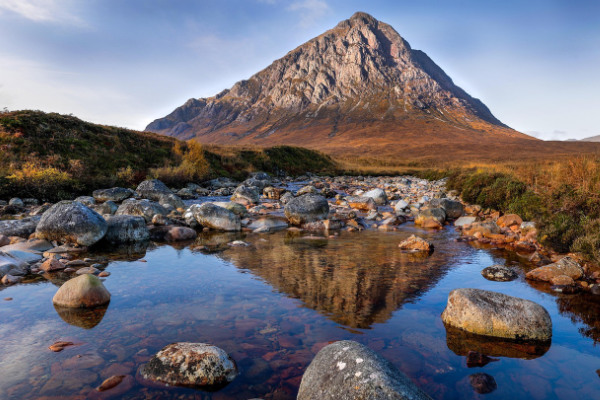
My boots first touched Scottish soil on a misty morning that whispered ancient lore across the moorlands. The West Highland Way, one of the best hiking routes in Europe, weaves through rugged highlands, shadowy glens, and glassy lochs, immersing hikers in a realm where myth and reality blur. The haunting calls of distant birds and the swirling fog reminded me of tales spun by Gaelic bards. Each step brought an overwhelming sensation that I was walking through the pages of a Celtic saga.
This 96-mile trail from Milngavie to Fort William introduces travelers to everything that makes hiking in Europe so compelling—diverse landscapes, rich history, and a culture that welcomes weary trekkers with warm hospitality. You’ll pass Loch Lomond’s sparkling shores, ascend the dramatic Devil’s Staircase, and be rewarded with vistas that epitomize the best hiking trips in Europe. Quaint villages like Tyndrum and Glencoe beckon you to pause for traditional Scottish fare, rounding out an experience steeped in both nature and heritage.
Fees and Practical Information
No official permit is required to walk the West Highland Way, and it remains accessible year-round, although rugged weather can pose challenges. Accommodation ranges from wild camping (with guidelines to respect local ecosystems) to cozy B&Bs. For the latest trail updates and potential route diversions, consult the West Highland Way Official Site. Scotland’s right-to-roam laws make it easier to explore, but always adhere to the Outdoor Access Code and pack out everything you bring in to preserve these best hiking trails in Europe.
Cinque Terre: Cliffside Charm in Italy
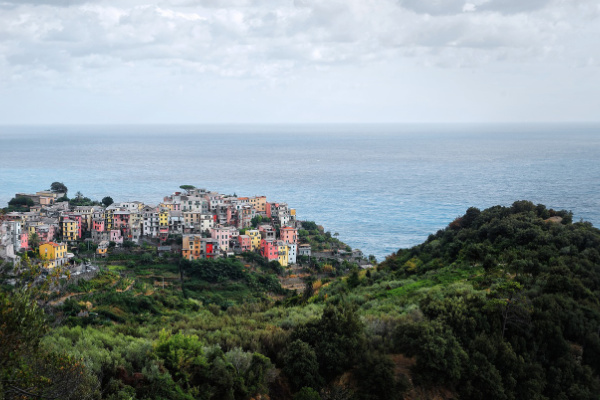
Emerging from a train tunnel and stepping into the warm Ligurian sun, I felt as though I had tumbled into a storybook. Cinque Terre’s pastel-hued villages cling to the rugged coastline, offering some of the most scenic hiking trails in Europe. My first glimpse of Manarola—houses stacked in a mosaic of color above the turquoise sea—stole my heart. Traversing the terraced vineyards between each village, I realized that Cinque Terre was more than a destination; it was a jubilant celebration of life, land, and sea.
Cinque Terre’s network of cliffside paths connects the five historic fishing villages—Monterosso, Vernazza, Corniglia, Manarola, and Riomaggiore—making for some of the best hiking trips in Europe. The route’s short distances belie the area’s enthralling beauty. Lemon groves, ancient olive orchards, and panoramic sea views greet you at every step. Savor a slice of focaccia while admiring pastel buildings that reflect sunlit shades onto the water below. Each village has a distinct personality, making a full exploration a sensory feast steeped in Italian charm.
Fees and Practical Information
A Cinque Terre Card, which costs around EUR 7.50 to 18.20 (depending on whether you want train access or not), is required to access certain trails and helps preserve the environment. Visit the Cinque Terre National Park Official Website for the latest trail conditions and closures. Due to landslides or maintenance, some paths may be temporarily closed. Despite Italy’s popularity, budget-minded explorers can still find guesthouses and smaller inns, proving that Cinque Terre remains one of the best hiking spots in Europe for all.
The Lycian Way: Coastal Magic in Turkey
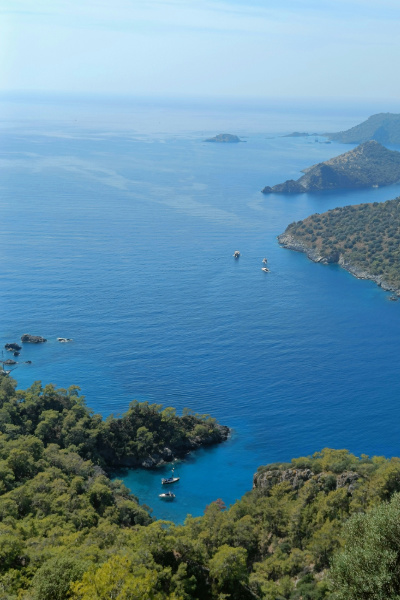
The Lycian Way offered my first taste of trekking along a turquoise coast—an intoxicating blend of balmy breezes and ancient ruins lost in thick forests. I recall gazing at the shimmering Mediterranean, feeling the warmth of the Turkish sun on my back, and tasting the salt in the air. Along these best hiking trails in Europe, I sensed the echoes of a civilization that thrived thousands of years ago. The path felt timeless, weaving me into the tapestry of a place steeped in mystique.
Stretching over 500 kilometers between Fethiye and Antalya, the Lycian Way snakes through secluded beaches, archeological sites, and quaint villages where locals greet you like old friends. It’s undoubtedly among the best treks in Europe, as you can stumble upon ancient theatres carved into hillsides, or swim in hidden coves at sunset. The route’s varied terrain—from pine forests to stony paths carved high above the sea—keeps every day fresh and exhilarating. This coastal wonder is a paradise for sun-loving hikers.
Fees and Practical Information
Access to most Lycian Way segments is free, though you might pay small fees to enter specific archaeological sites or beaches. If you plan on exploring historical ruins, consult the Turkish Ministry of Culture and Tourism for current pricing and visiting hours. Wild camping is generally possible in many areas, but always respect local landowners’ regulations. Budget-conscious trekkers can opt for family-run pensions in small villages. With adequate water and sun protection, this route remains a highlight among the best hiking routes in Europe.
GR20 in Corsica: A Fiery Mountain Odyssey
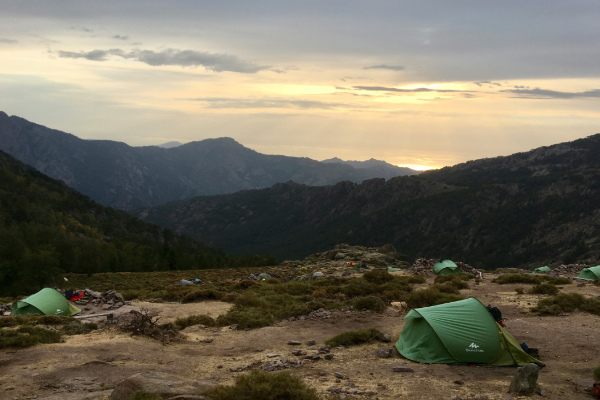
The moment I set foot on the GR20 in Corsica, I felt the pulse of the island beneath my soles. Jagged peaks towered over tranquil valleys, forming a landscape as fierce as it was mesmerizing. Even seasoned adventurers call it one of the best treks in Europe, a challenge that demands both respect and awe. I remember standing atop a rocky outcrop, the Mediterranean Sea glistening in the distance, feeling a heady mix of exhaustion, exhilaration, and the primal thrill of true wilderness.
The GR20 unfolds like a fiery tapestry, revealing Corsica’s geological drama at every turn: sheer cliffs giving way to sparkling lakes, dense pine forests juxtaposed with desert-like ridges. This is among the best hiking destinations in Europe for those seeking a test of grit, as certain sections involve scrambling over steep, craggy terrain. Rustic mountain refuges dot the route, providing camaraderie and communal meals. Few places can rival the sense of raw adventure offered by Corsica’s formidable interior.
Fees and Practical Information
While the GR20 itself is free to hike, overnight stays in park refuges require a reservation fee. Due to the trail’s demanding nature, adequate preparation is vital—top-notch footwear, sturdy hiking poles, and awareness of sudden weather shifts are non-negotiable. Corsica’s mountainous environment makes it one of the best hiking spots in Europe, but it also requires respect for local ecosystems. Pack out all trash and embrace the spirit of responsible trekking.
Kungsleden: Sweden’s Arctic Wonderland
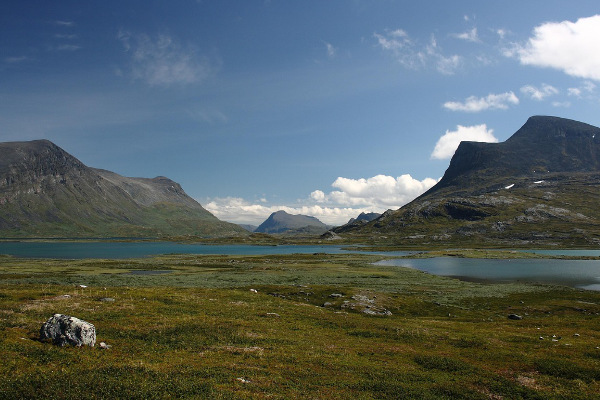
I was lured to the Kungsleden by tales of shimmering northern lights and endless summer days. Sweden’s “King’s Trail” became my personal quest for solitude among untouched wilderness. Tall birches whispered in the breeze, reindeer grazed in the distance, and I felt a primal sense of peace rarely found elsewhere. As one of the best hiking trails in Europe, Kungsleden gave me boundless freedom. There were moments when the horizon stretched out for miles, and I believed I was the only person on Earth.
Located in Swedish Lapland, the Kungsleden spans roughly 440 kilometers, meandering through valleys, over rivers, and around broad tundra landscapes. Traditional mountain huts operated by the Swedish Tourist Association offer warmth and companionship. Depending on the season, hikers may encounter midnight sun or swirling auroras, experiences that set this route apart from other best hiking treks in Europe. Marvel at the majesty of towering peaks like Kebnekaise, Sweden’s highest summit, and lose yourself in the unspoiled wonders of the far north.
Fees and Practical Information
Though there is no fee for the trail itself, overnight stays in huts or using services like boat crossings come at a moderate cost. Consult the Swedish Tourist Association for hut availability, booking details, and current regulations. Wild camping is allowed in line with Sweden’s Right of Public Access, but always leave the land as pristine as you found it. Proper gear is essential for unpredictable weather conditions, ensuring that your journey through these best hiking routes in Europe remains safe and exhilarating.
Rota Vicentina: Portugal’s Seaside Escape
I first encountered Rota Vicentina on a lazy afternoon, strolling along golden Portuguese cliffs backlit by a radiant sun. Waves crashed below, sending briny sprays upward as if in greeting. This trek, spread across southwestern Portugal, felt enchanting and unhurried—a perfect harmony of ocean breezes, pastoral vistas, and charming fishing villages. Walking the Rota Vicentina is a gentle reminder of how hiking in Europe can encompass so many terrains: from towering mountains to tranquil coasts, each offering its own soulful respite.
Comprising two main routes—the Historical Way and the Fishermen’s Trail—Rota Vicentina is among the best hiking trips in Europe for coastal aficionados. The Fishermen’s Trail skirts dramatic sea cliffs, providing sweeping views of the Atlantic’s roaring waves. Meanwhile, the Historical Way meanders inland, taking you through rolling farmland, cork oak forests, and sleepy hamlets. You’ll share hearty meals of grilled sardines, sample local wines, and bask in quiet sunsets that set the horizon aflame—memories that linger well beyond your return home.
Fees and Practical Information
Both the Historical Way and Fishermen’s Trail are free to access, but certain sections cross private property. Respect local rules, and consult the Rota Vicentina Official Website for trail updates and recommended stages. Though accessible year-round, the scorching summer months can be challenging. Affordable guesthouses and rural accommodations line the route, offering feasible options for budget travelers eager to explore one of the best places to hike in Europe. Pack ample water, sun protection, and a willingness to wander off the beaten path.
Tour du Mont Blanc: A Tri-Nation Trek
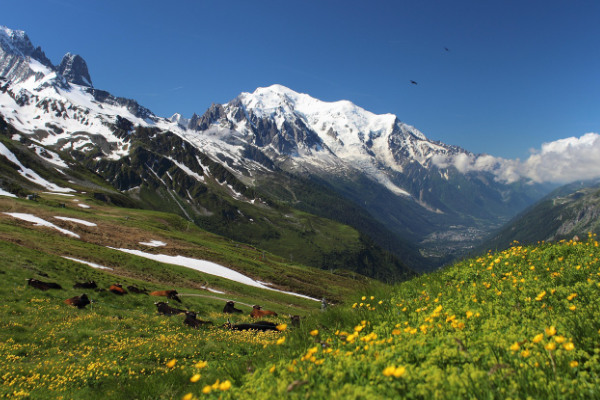
Embarking on the Tour du Mont Blanc felt like stepping into a fairy tale that spanned three countries—France, Italy, and Switzerland. No matter which border I crossed, I was treated to new flavors, diverse cultures, and majestic views of the Alps. This multi-day trek is heralded as one of the best hiking destinations in Europe, and rightly so. One evening, I remember resting in a cozy refuge after an intense climb, gazing at Mont Blanc’s snowy summit and feeling awe wash over me.
Spanning roughly 170 kilometers, the Tour du Mont Blanc encircles Western Europe’s highest peak. Panoramic ridges, glacier-fed streams, and verdant valleys greet hikers along this challenging yet rewarding path. Each stage offers contrasting vistas—lush meadows in one valley, jagged peaks in the next—making it one of the best treks in Europe for variety-seekers. You’ll pass through charming Alpine villages, where local cheeses and fresh baguettes become part of the experience. The camaraderie among fellow hikers also elevates the journey’s unforgettable quality.
Fees and Practical Information
You don’t need a permit to hike the Tour du Mont Blanc, but some mountain huts require reservations, especially during peak season. Check the relevant tourism boards—like Chamonix Mont Blanc—for trail closures, weather updates, and hut bookings. Expect moderate expenses on food and accommodations, given the region’s popularity. Nonetheless, this trifecta trek remains one of the best hiking trails in Europe for those seeking a classic Alpine experience. Prepare adequately, as the weather can shift swiftly in mountainous terrain.
Trolltunga: Norway’s Iconic Cliff Hanger

The day I dared to hike to Trolltunga, Norway’s iconic rock jutting out some 700 meters above Lake Ringedalsvatnet, was etched with adrenaline. The crisp Scandinavian air, glacial waters, and the humbling presence of towering fjords made me realize why Norway consistently features among the best hiking spots in Europe. After hours of challenging ascent, stepping onto Trolltunga felt like venturing to the edge of the world. Heart pounding, I savored the weightlessness of standing on that ledge, floating above a landscape of infinite wonder.
Trolltunga’s dramatic location amid mighty fjords and dramatic cliffs is nothing short of spectacular. Snow-capped mountains stand sentinel, and waterfalls carve paths through the rugged terrain. Though the trek spans about 28 kilometers round trip, each step is rewarded by sweeping panoramas that define the essence of best hiking routes in Europe. Camping near Trolltunga intensifies the experience, especially if you’re greeted by a magenta sunrise. This is adventure at its finest, blending natural grandeur with a sense of personal triumph.
Fees and Practical Information
Access to Trolltunga is free, though parking lots near the trailhead charge a daily fee ranging from NOK 300-600. For updated pricing and regulations, visit the Trolltunga Official Website. Given the route’s difficulty, hikers should be in good physical condition and carry appropriate gear. Fog and sudden weather changes can make navigation tricky. Norway’s laws generally allow camping, but follow Leave No Trace principles. Preparation ensures you’ll truly appreciate why Trolltunga ranks among the best hiking trails in Europe.
Plitvice Lakes: Croatia’s Turquoise Haven
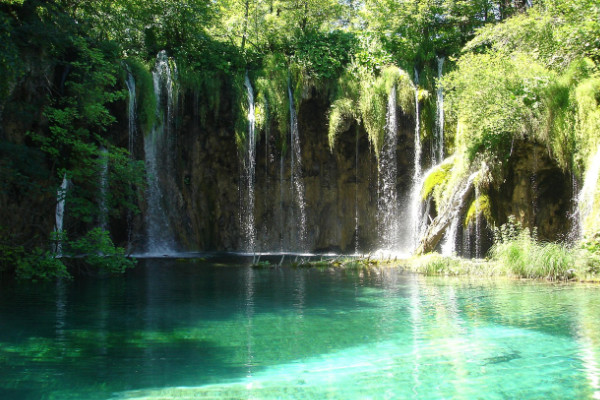
I ventured to Plitvice Lakes on a whim, only to be mesmerized by the surreal turquoise waters cascading through verdant foliage. Each waterfall seemed more enchanting than the last, reminding me that hiking in Europe is not limited to high-altitude adventures. The footbridges winding over serene lakes made me feel like I was floating on water. As the sunlight filtered through the canopy, I sensed nature’s gentle lullaby. Plitvice Lakes is not just a park—it’s a portal to Croatia’s emerald heart.
The National Park’s 16 terraced lakes and 90+ waterfalls form an aquatic paradise that stands out among the best hiking destinations in Europe. Wooden pathways gently guide visitors through a symphony of rushing water, sparkling pools, and lush flora. Wildlife sightings—like fish gliding through crystalline pools or birds weaving among the treetops—enhance the park’s allure. Plitvice Lakes’ tranquil atmosphere makes it a distinctive hiking experience—focusing on soothing beauty rather than challenging ascents, yet still offering awe-inspiring sights at every turn.
Fees and Practical Information
Plitvice Lakes National Park charges an entry fee that varies by season, typically between EUR 10 to 40. For current prices and any updates, check the Plitvice Lakes National Park Official Site. Visitors must stay on designated trails to protect the fragile ecosystem. Accommodation options range from campsites to nearby hotels, fitting varying budgets. While the park is open year-round, it experiences significant crowds in summer. Arriving early helps secure an intimate encounter with these best hiking spots in Europe.
Ring of Kerry: Ireland’s Emerald Gem
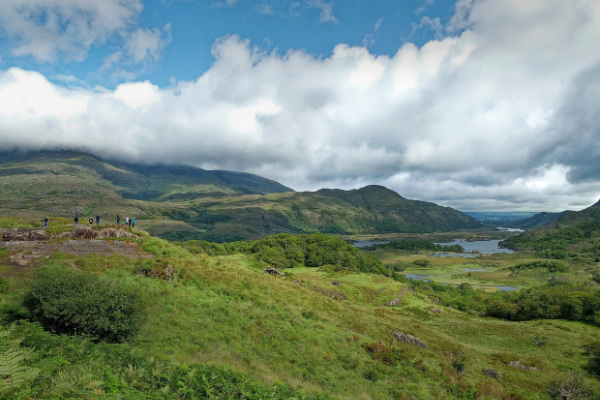
When I arrived at the Ring of Kerry, I was greeted by rolling green hills and the welcoming lilt of Irish accents. The soft drizzle seemed to enhance the radiance of the countryside—a place where rainbows are frequent visitors. Hiking parts of this famed circuit, I found myself lulled by the rhythmic push and pull of Atlantic waves. The spirit of Ireland is woven into its folklore, music, and landscapes, making the Ring of Kerry one of the best places to hike in Europe.
The 179-kilometer loop around the Iveragh Peninsula is best known for its rugged coastal cliffs, quaint fishing villages like Portmagee, and sweeping vistas that reflect the country’s nickname: the Emerald Isle. Killarney National Park, with its ancient oak forests and shimmering lakes, adds layers of enchantment. The interplay of folklore and scenery sets this route apart among the best treks in Europe. Whether you’re snapping photos of the Gap of Dunloe or savoring fresh seafood in a seaside pub, each moment resonates with Celtic charm.
Fees and Practical Information
No permit is required to explore most sections of the Ring of Kerry, though certain attractions like Muckross House charge individual entry fees. Check Ireland’s Official Tourism Website for details on guided tours, ferry schedules to Skellig Michael, and local regulations. B&Bs and guesthouses line the route, offering quintessential Irish hospitality at varying price points. Expect rapidly shifting weather—pack layers and waterproof gear. For those craving coastal grandeur coupled with Gaelic tradition, the Ring of Kerry epitomizes hiking treks in Europe.
Best Times to Hike in Europe, Safety, Budget, and Travel Tips
Europe’s geographical diversity means there isn’t a single “perfect” time to embark on the best hiking trips in Europe. However, late spring through early autumn is a popular choice for most alpine or moderate climate regions. In northern latitudes like Sweden, summer brings extended daylight hours, while the Mediterranean can be scorching, so consider mid-spring or autumn for cooler temperatures. Research each region’s weather patterns to find the sweet spot between pleasant conditions and fewer crowds.
Staying safe is paramount. Always check local weather reports and carry appropriate gear for the terrain you’ll tackle, whether it’s the high peaks of the Swiss Alps or the coastal cliffs of Portugal. Pack a reliable map or GPS device, particularly if you’re heading off well-marked trails. Registering with local authorities or park offices is a wise measure for remote treks such as the GR20 in Corsica. In many of the best hiking trails in Europe, the climate can shift quickly—never underestimate sudden changes in altitude or temperature.
Budget recommendations vary widely. Regions like Norway or Switzerland tend to be pricier, so plan for higher accommodation and food costs. By contrast, areas in Eastern or Southern Europe (e.g., Croatia or certain parts of Portugal and Turkey) generally offer more affordable options. You can trim expenses by staying in guesthouses or using mountain huts instead of hotels. Stocking up on groceries and cooking your own meals is another reliable money-saver, especially in locales known for higher costs.
Transportation options also differ. In many of the best places to hike in Europe, train networks are efficient—especially in Switzerland, France, and Italy—making it easier to reach trailheads. For more remote areas, buses or rental cars might be required. Check for local travel passes that combine trains, buses, and boats, often at discounted rates. As for accommodations, consider hostels, Airbnb, or campgrounds if you’re on a tight budget. Always book in advance for popular treks like the Tour du Mont Blanc or Cinque Terre, particularly during the high season.
Whether you crave high-altitude challenges, coastal serenity, or rolling green hills, hiking treks in Europe cater to all tastes and budgets. By choosing the right season, practicing sound safety measures, and planning your finances carefully, you’ll ensure that your adventure remains one of the best hiking destinations in Europe without unnecessary stress or surprises.
Conclusion
From the snow-capped majesty of the Swiss Alps to the turquoise waters of Plitvice Lakes, Europe overflows with vibrant landscapes and cultural encounters at every turn. Your heart might race atop Trolltunga’s dramatic ledge or melt into the coastal bliss of the Lycian Way. Each locale offers its own brand of magic, proving that hiking in Europe is not merely about traversing trails, but about embracing age-old stories, varied cultures, and personal transformations. Embark on these best places to hike in Europe to witness living history, untamed beauty, and the promise of endless discovery.
Which country has the most diverse hiking trails in Europe?
It’s subjective, but many believe that Switzerland offers an unparalleled range—glacier treks, forest paths, and rugged alpine routes. However, countries like France, Italy, and Norway also feature diverse, world-renowned trails that rank among the best hiking spots in Europe.
How physically demanding are the best treks in Europe?
Difficulty varies widely. Some routes, like Cinque Terre, are short and moderate, while others, such as the GR20, demand technical skills and excellent fitness. Always research terrain and weather conditions to choose a trek that matches your ability.
Is it expensive to hike in destinations like Norway or Switzerland?
These regions can be pricier due to higher costs of living. However, many best hiking trips in Europe in these countries offer free access to trails. Saving on accommodations (e.g., by camping or staying in huts) and preparing meals can make the adventure more budget-friendly.
Are these best hiking trails in Europe suitable for solo travelers?
Yes, many of the best hikes in Europe are well-marked and safe for solo adventurers, particularly popular routes like the West Highland Way or Tour du Mont Blanc. Always check local safety guidelines, share your itinerary, and carry reliable navigation tools when trekking alone.
Do I need special permits for hiking in Europe?
Permits often aren’t required for general trekking. However, certain parks or reserves (e.g., Plitvice Lakes in Croatia) charge entrance fees. Some huts on the GR20 or Tour du Mont Blanc require bookings. Always consult official resources before traveling.

